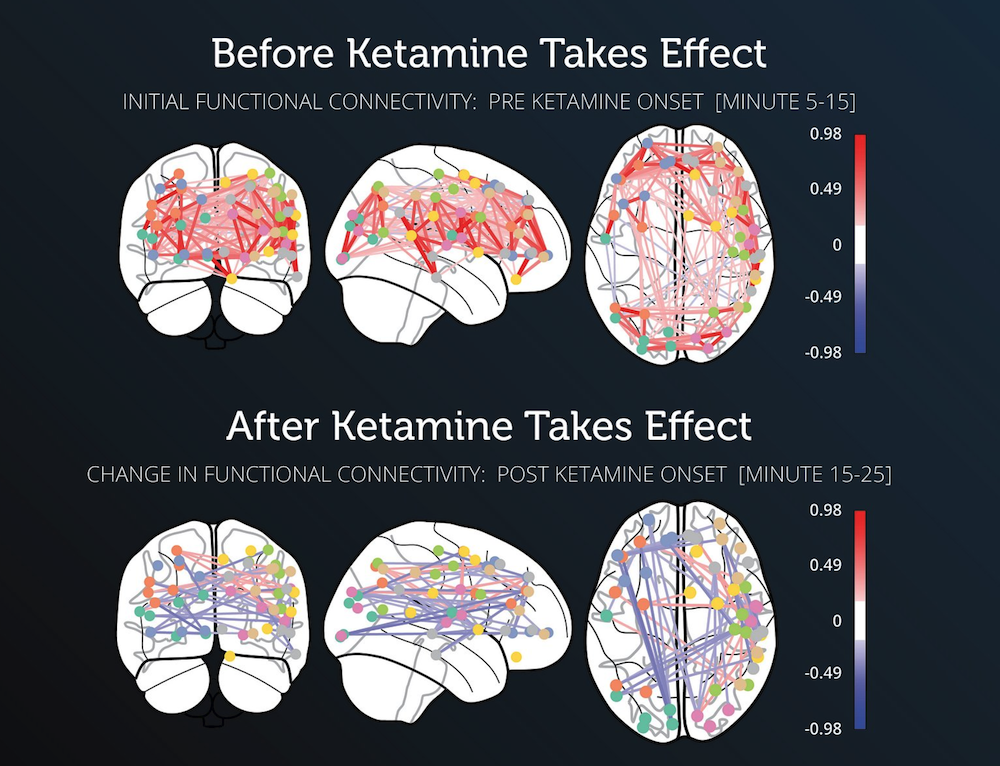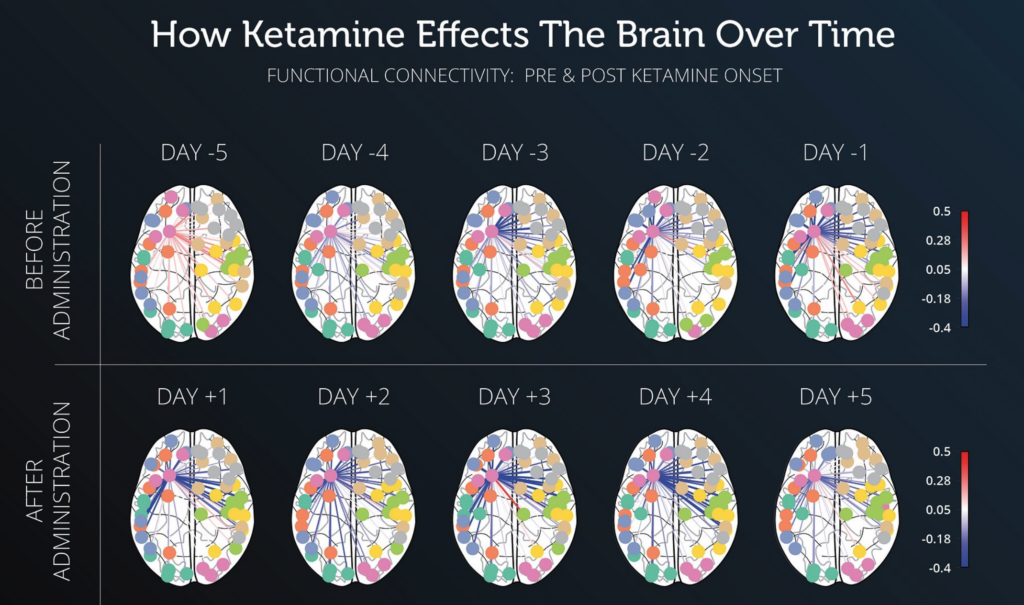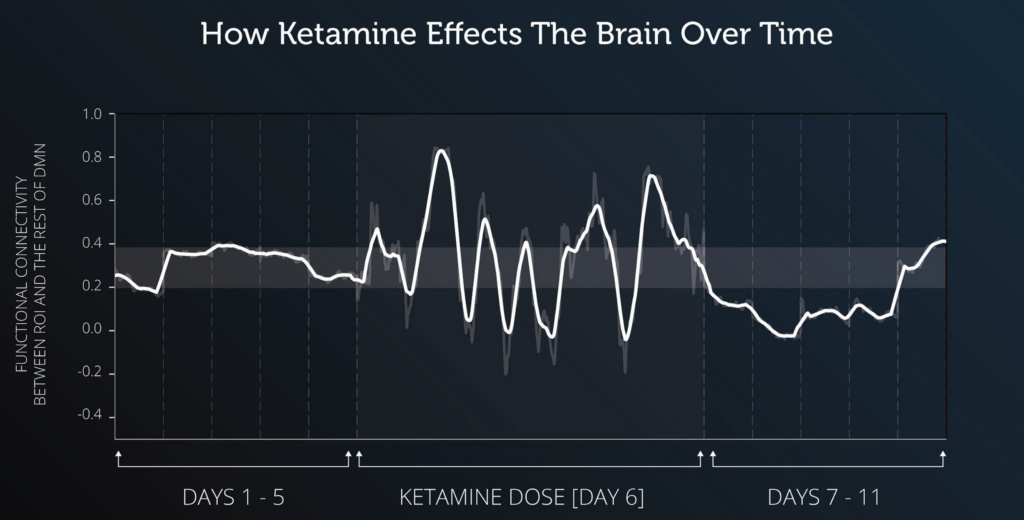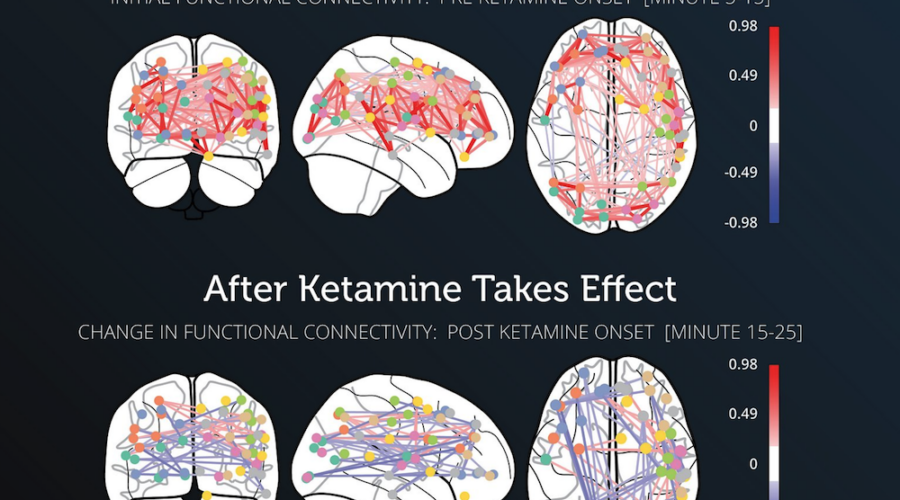Anti-Aging Biohacker Bryan Johnson’s Ketamine Experiment
Bryan Johnson, a 47-year-old entrepreneur known for his biohacking endeavors, recently shared an intriguing experiment with ketamine and brain activity. This experiment aimed to understand the effects of ketamine on the brain before, during, and after its use. Known for exploring innovative methods to optimize human longevity, Johnson turned to ketamine, a substance typically associated with depression and chronic pain treatments, to gauge its impact on cognitive flexibility.
Looking for treatment? Find ketamine clinics closest to you as well as other psychedelic therapies in your area.
The Experiment
For 15 days, Johnson took ketamine while monitoring his brain activity using a device of his own invention—the Kernel Flow. This non-invasive brain interface technology provided a window into the fluctuations in his neural patterns. Prior to the ketamine experiment, Johnson’s brain activity displayed predictable, rigid patterns. However, following the ketamine treatment, the results were strikingly different. His brain’s activity became much more flexible, with connections being made in areas previously underutilized.
Psychedelic AI is Here! Try out the beta version of HealingChat, HealingMaps AI chatbot that takes all our vetted content, clinics and retreats to answer all your questions in a safe environment. Try the beta version now!
Johnson described his experience, comparing his brain to a global air traffic network. Before the treatment, traffic between major hubs followed clear, predictable routes. Post-treatment, however, his brain’s neural connections resembled a more chaotic network, where once-frequented hubs were bypassed in favor of smaller, less-visited ones, spreading across regions in the U.S., Europe, and Asia.
Here’s a breakdown of Bryan Johnson’s ketamine experiment:
| Aspect | Before Ketamine | After Ketamine |
|---|---|---|
| Brain Activity | Rigid, predictable patterns | Flexible, varied, open to new connections |
| Neural Traffic | Consistent routes between major brain hubs | Rerouted traffic to smaller, less-used brain areas |
| Cognitive Flexibility | Less cognitive flexibility, rigid thinking | Enhanced flexibility, open to new ways of thinking |
| Brain Activity Network | Traditional, predictable air traffic network | More chaotic, with dispersed traffic across various regions globally (U.S., Europe, Asia) |
| Overall Impact | Fixed, structured patterns | Increased cognitive openness and potential for new neural connections |



Do you work in the ketamine industry? We created the first newsletter just for you: Sign up here!
A New Perspective on Ketamine
Ketamine has become recognized for its fast-acting relief for depression and PTSD, offering an alternative to traditional antidepressants. It operates by affecting the brain’s glutamate system, fostering rapid neural regeneration. Johnson’s experiment highlights how this effect might extend beyond mental health treatment. His experience suggests that ketamine may not only provide therapeutic benefits but could also induce cognitive shifts, encouraging new ways of thinking.
This experiment sheds light on the profound impact ketamine could have, both in therapeutic settings and for individuals exploring the potential of their own cognitive abilities.



